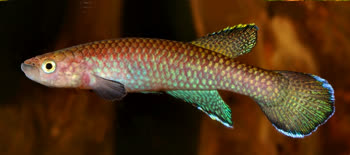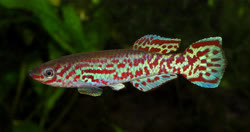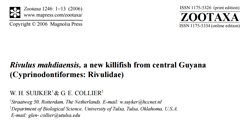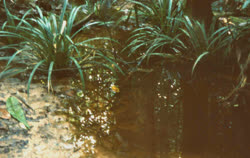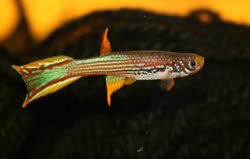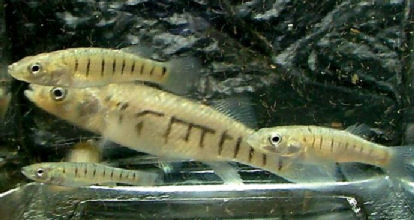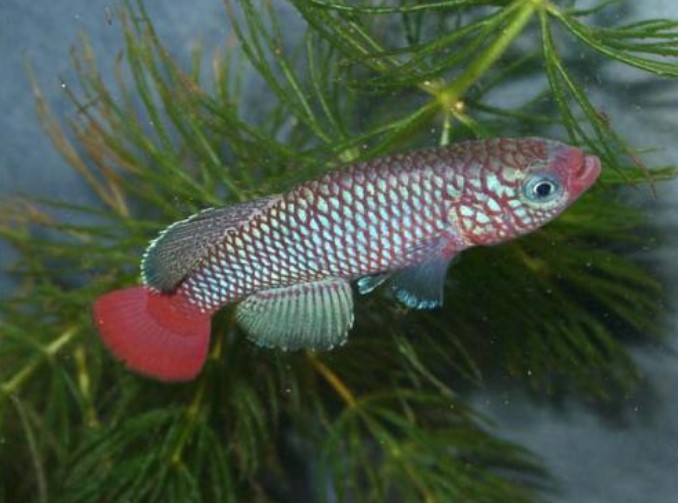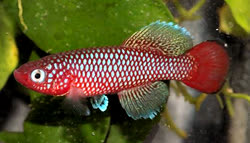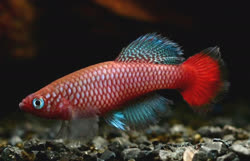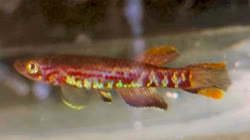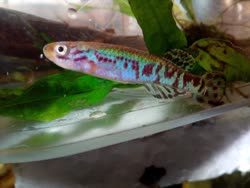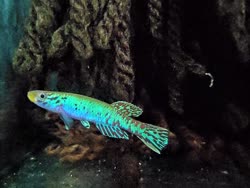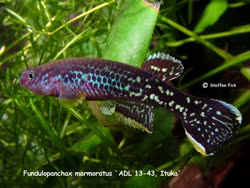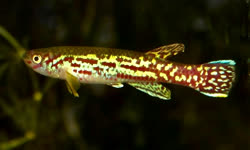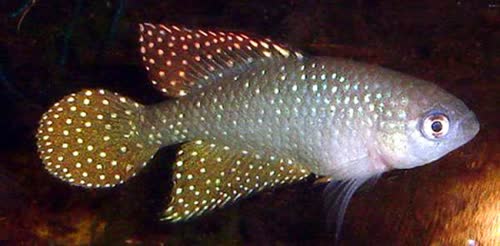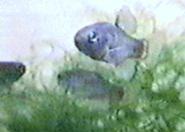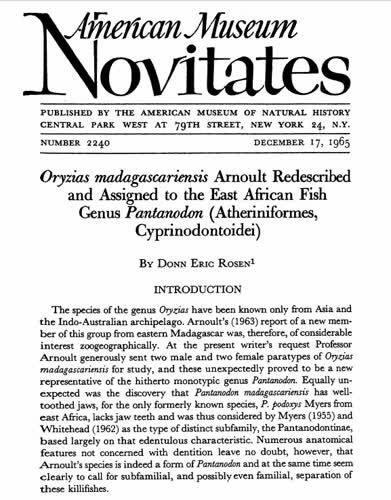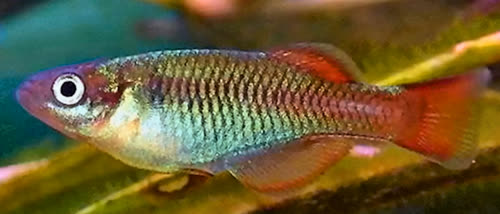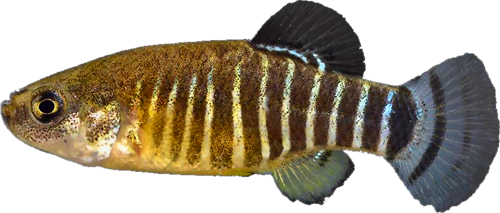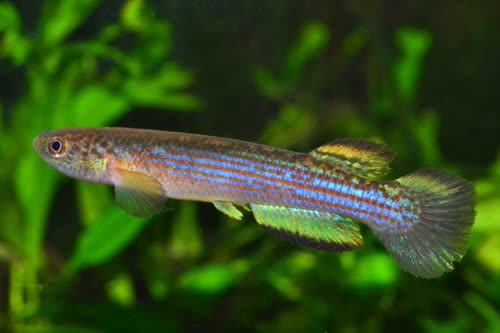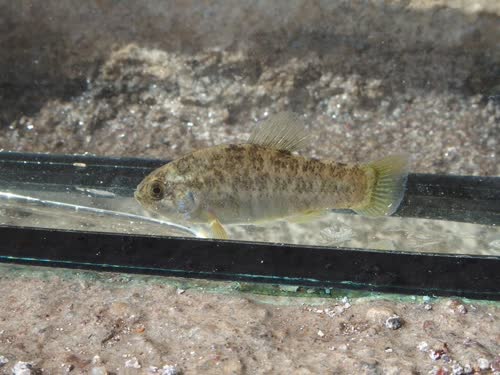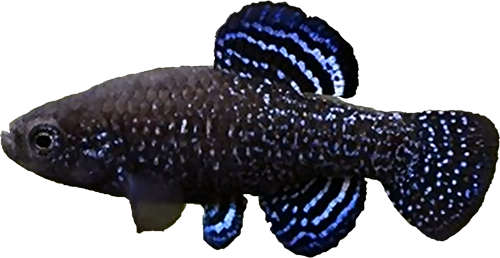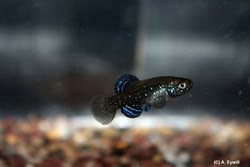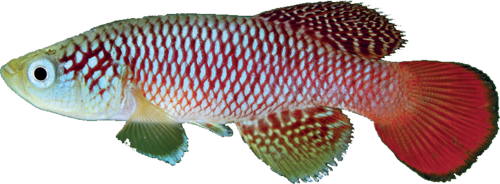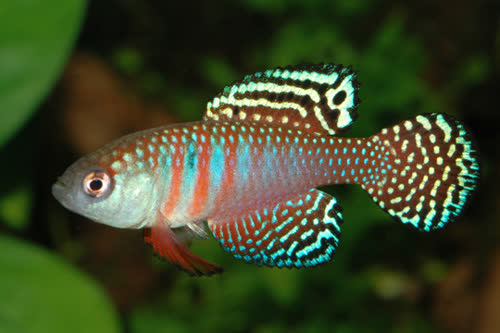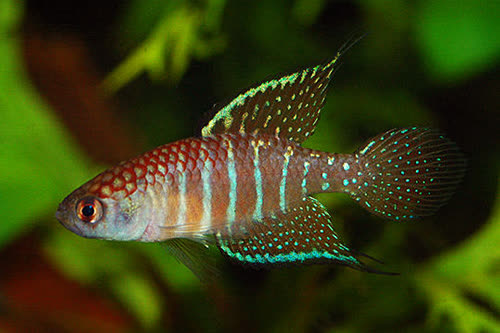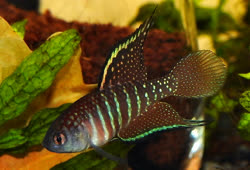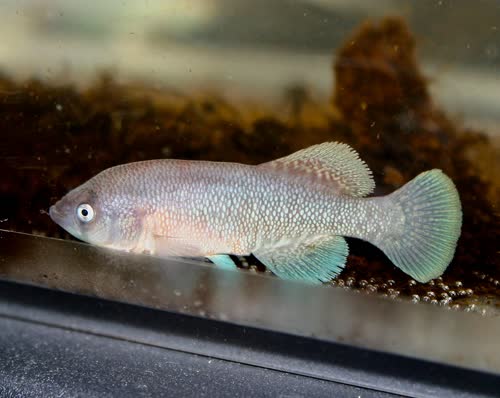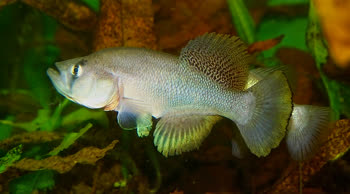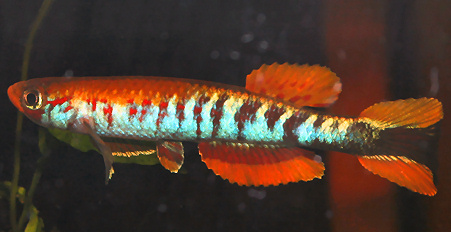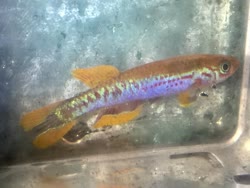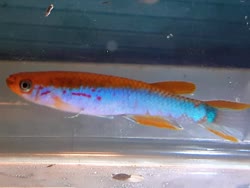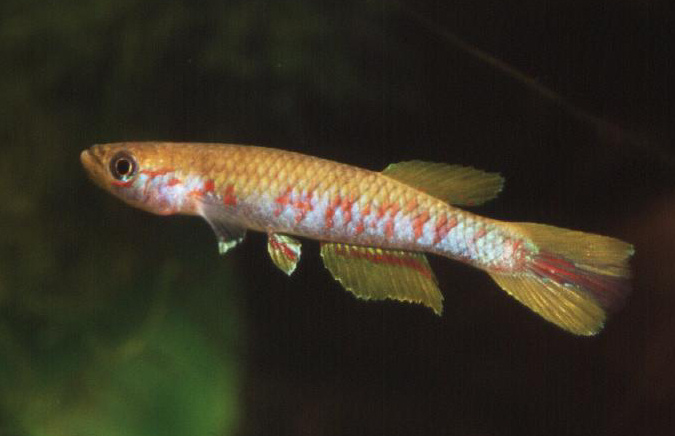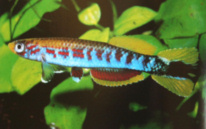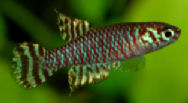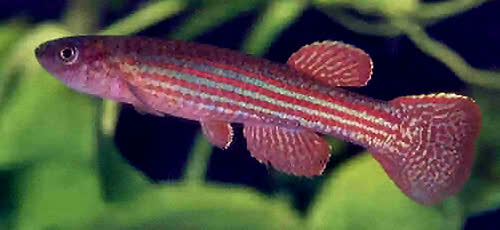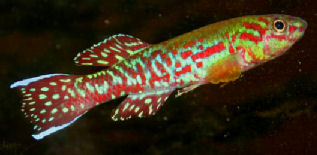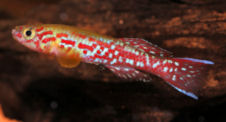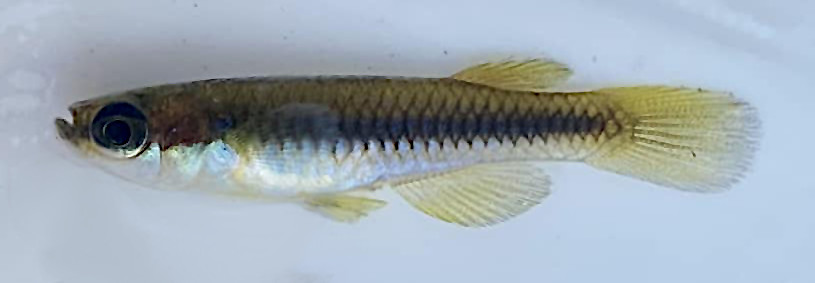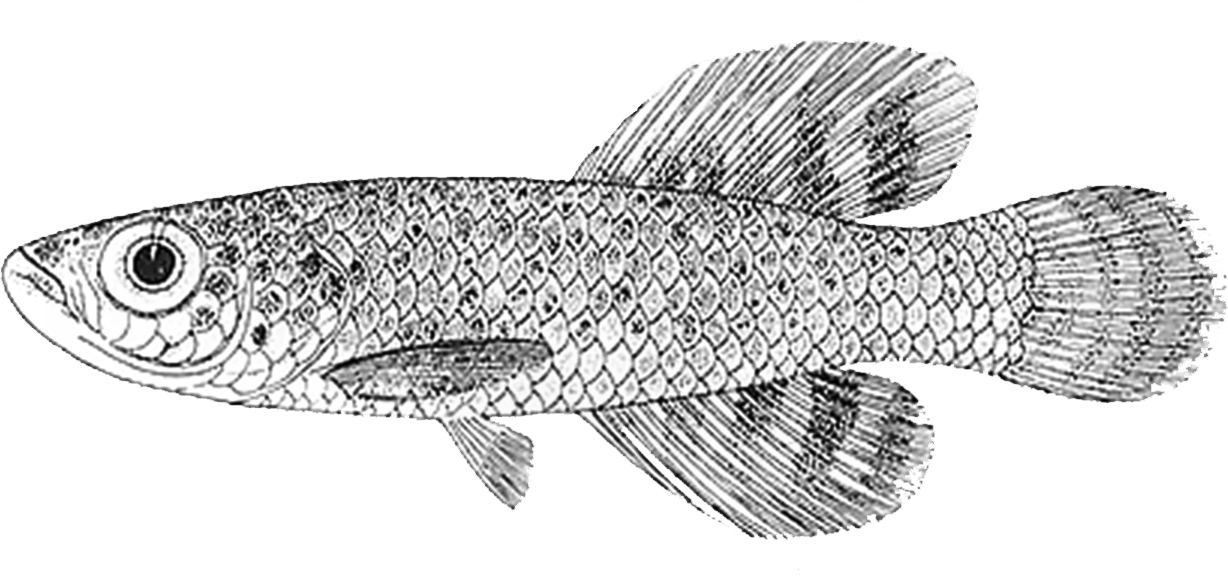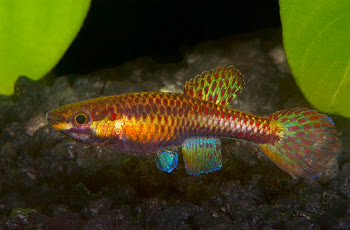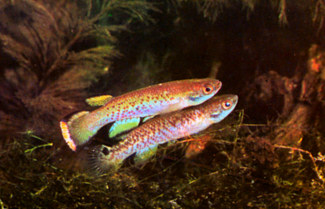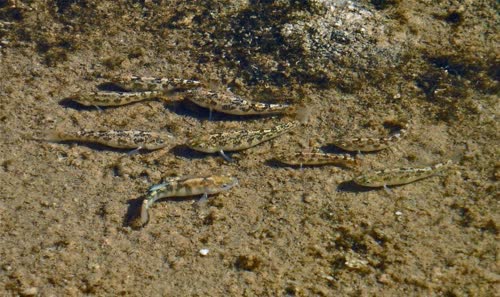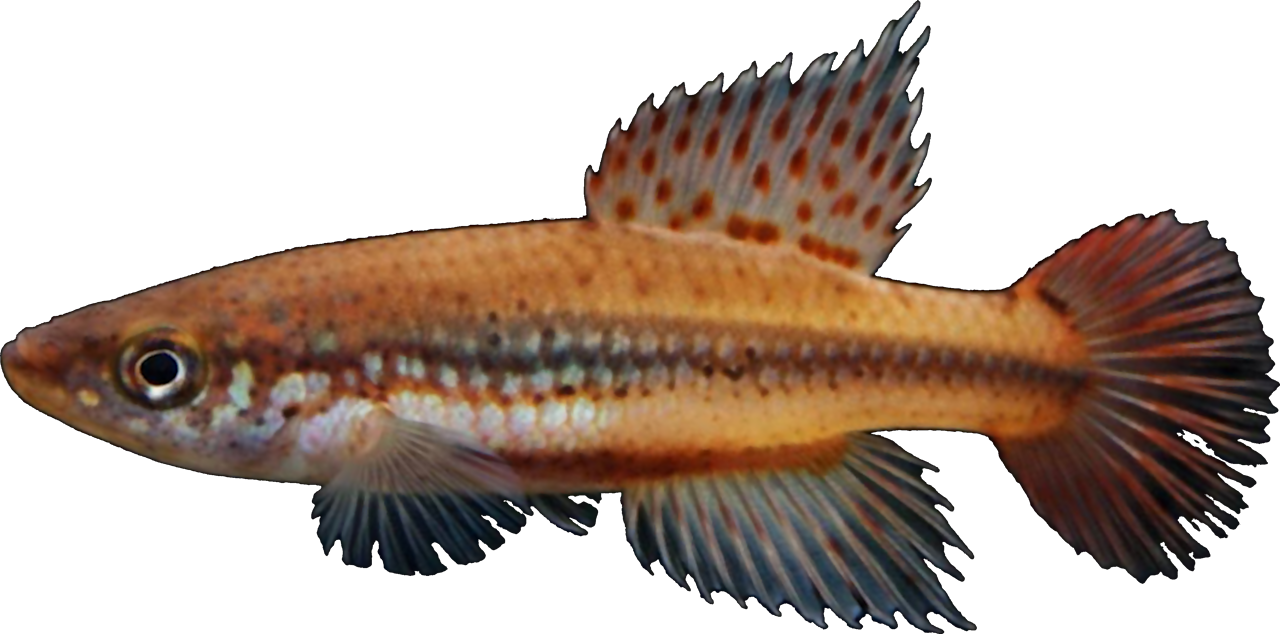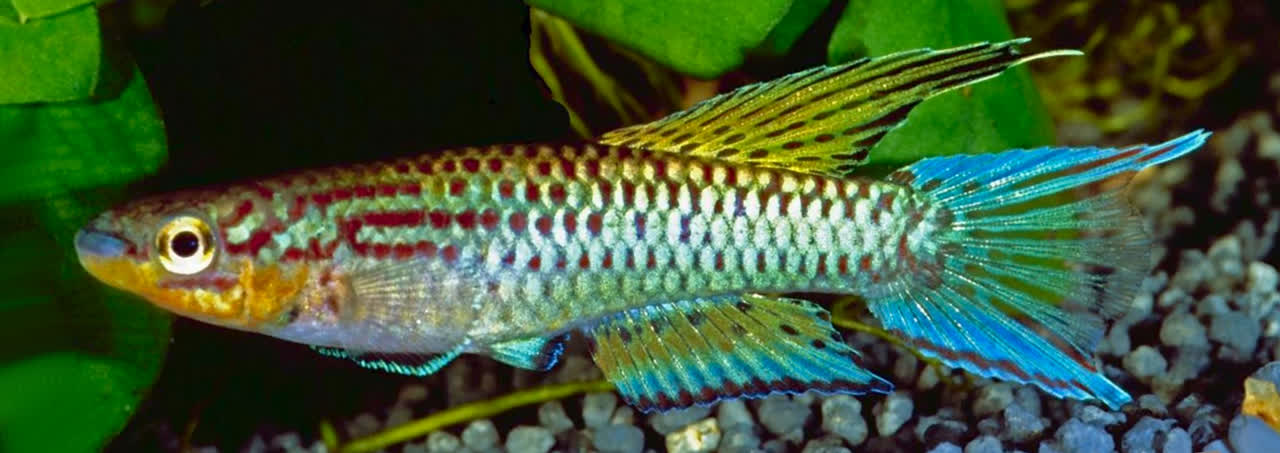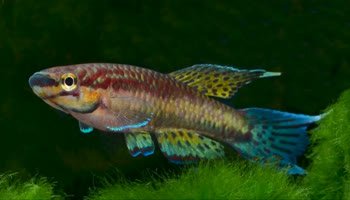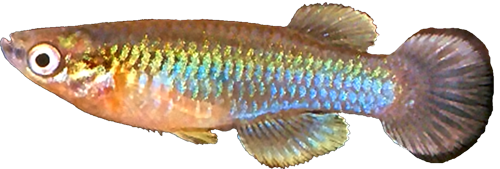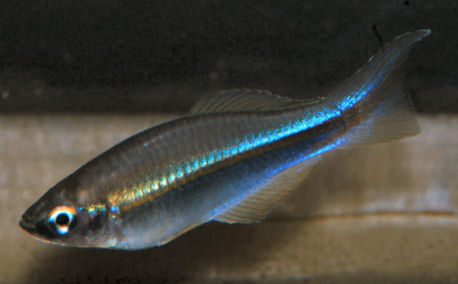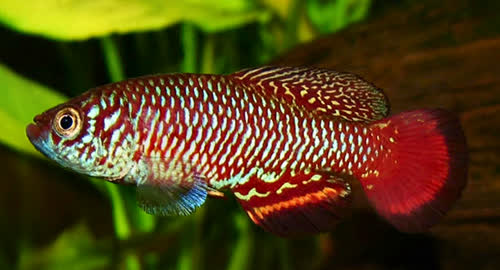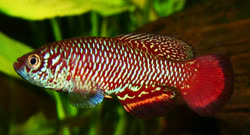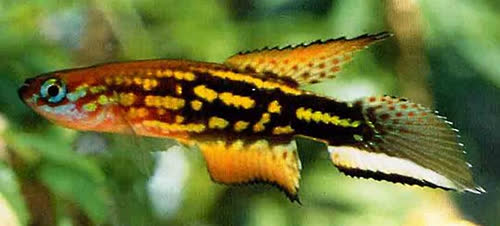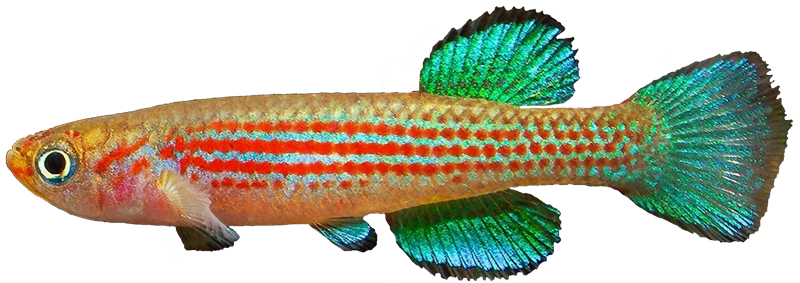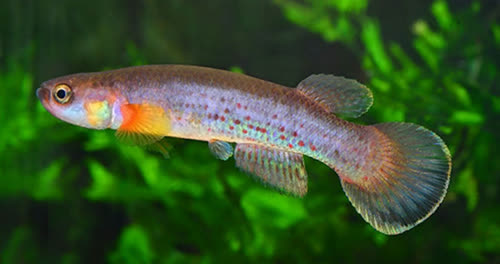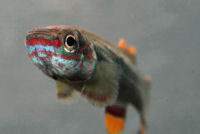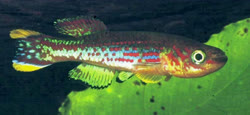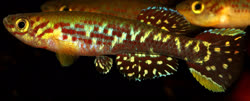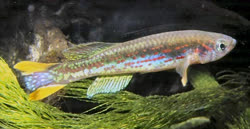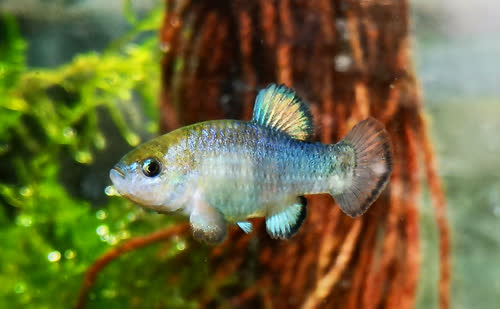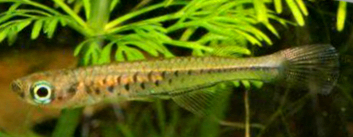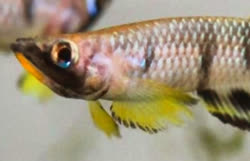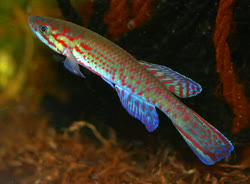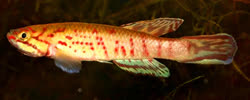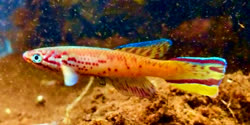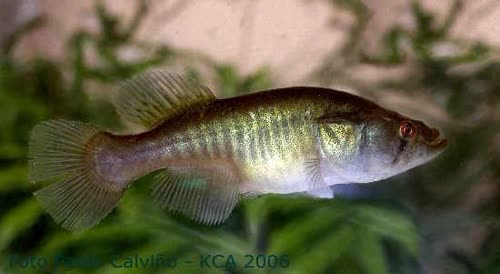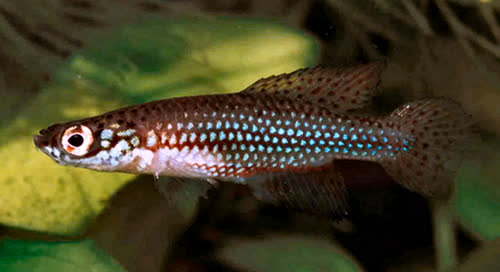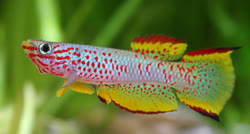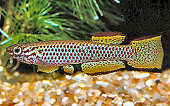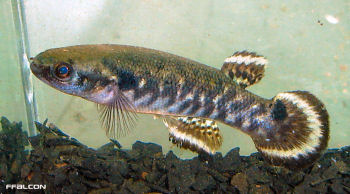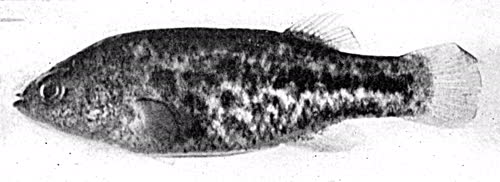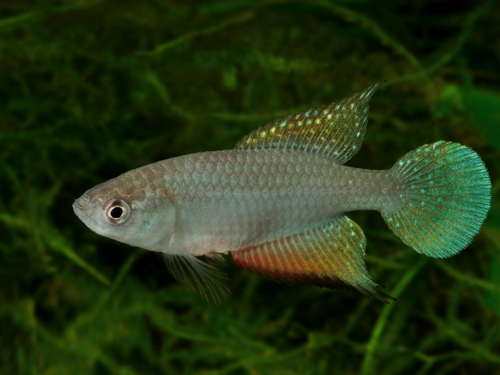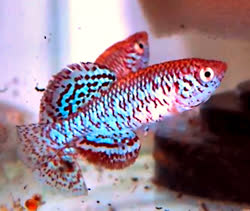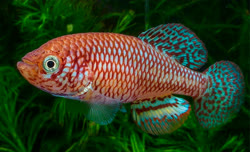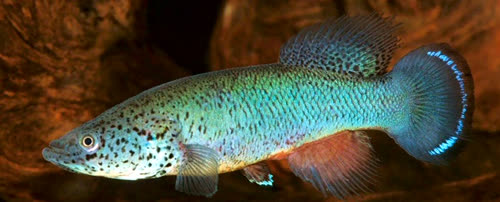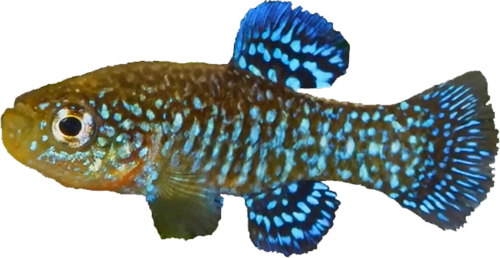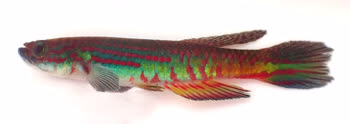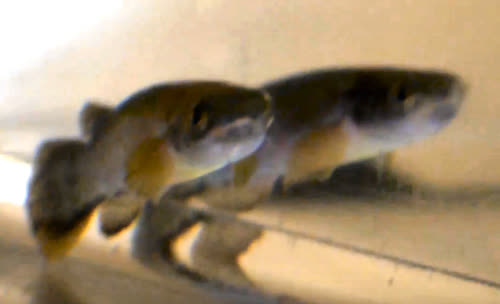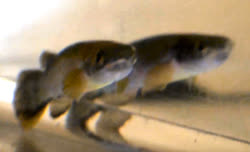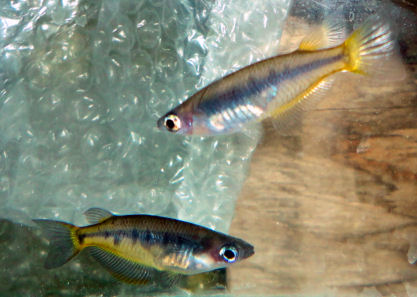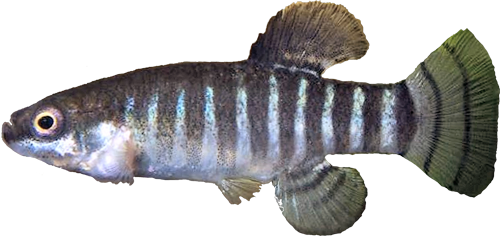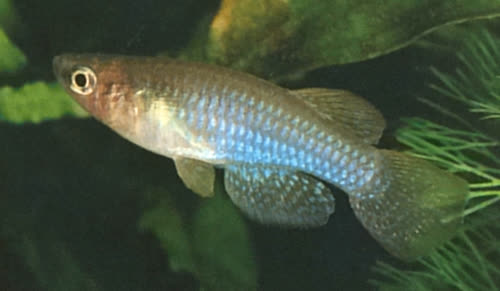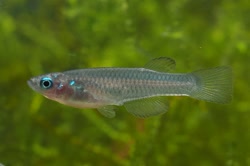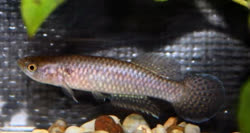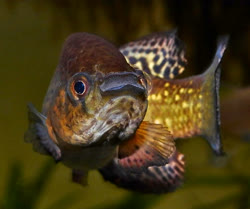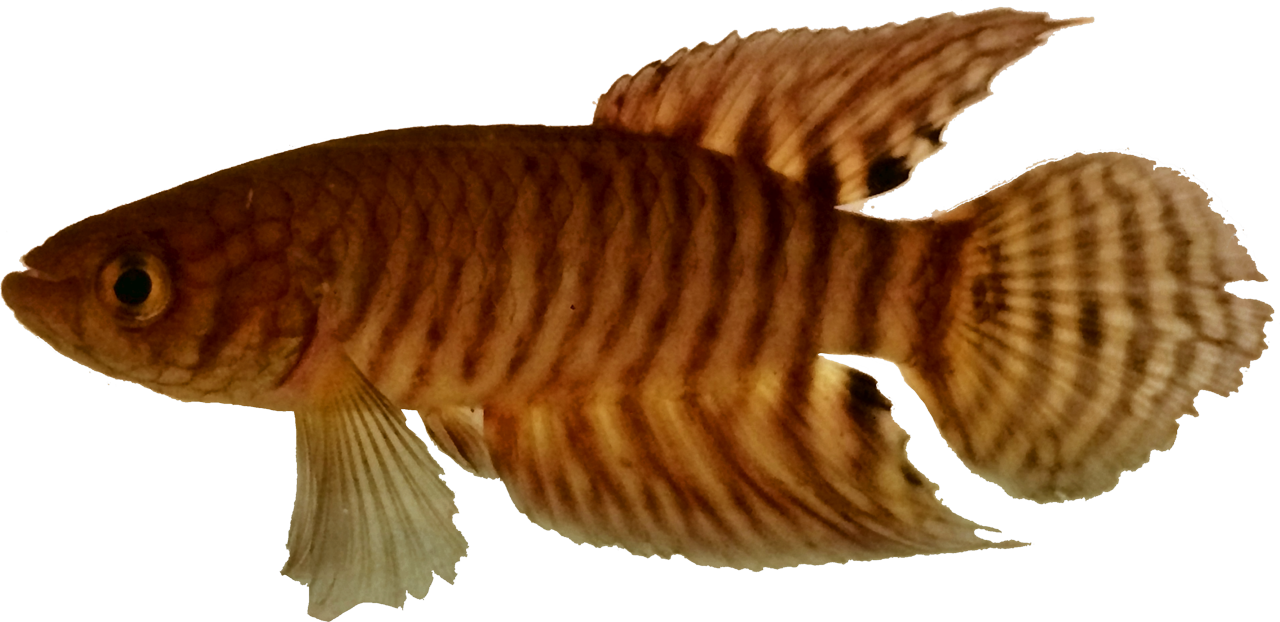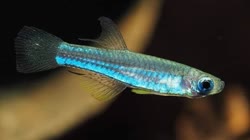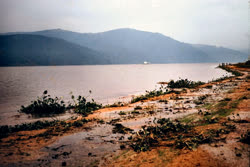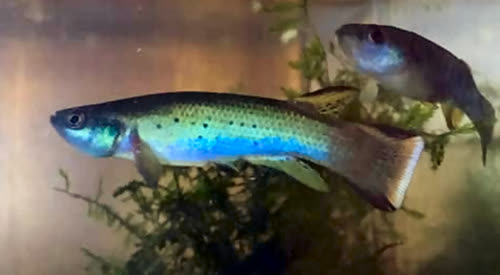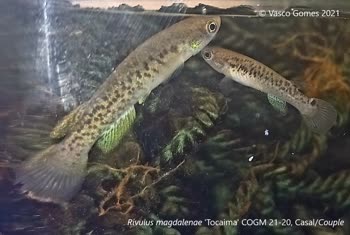|
Nimbapanchax maeseni The old " Roloffia/Aphyosemion maeseni turned out to have been described from a type specimen that was really an Epiplatys. This is the new name for that fish. |
|
Fundulopanchax gardneri mamfense |
|
Rivulus mahdiaensis Discovered in 1995 by W. Suijker and Y. Suijker-Jansen who also found another location 1997 with F. and M. Vermeulen; no other locations have been found since. Described by W. Suijker and G. Collier in 2006. Unusually low number of chromosomes with a rather large pair of arcocentric elements (shown with arrows). Uneven sex ratios are common, not difficult otherwise. From cool acidic soft "black" water similar to African killifish blackwater biotopes for example, Diopteronspecies. |
|
Funduls majalis |
|
Nothobranchius makondorum |
|
Aphyosemion maculatum |
|
Fundulopanchax (Pauciradius) marmoratus |
|
Rivulus mabura
|
|
Hypsolebias macaubensis |
|
Rachovia maculipinnis |
|
Anablepsoides micropus |
|
Cyprinodon macularius |
|
Pantanodon madagascariensis
|
|
Platypanchax modestus |
|
Aphanius maeandricus
|
|
Hypsolebias mediopapillatus |
|
Rivulus mejiai
|
|
Cyprinodon meeki
|
|
Paraphanius mento |
|
Nothobranchius melanospilus |
|
Epiplatys mesogramma |
|
Lacustricola margaritatus Lacustricola margaritatus, a new species inhabiting small streams and swamps in the Lake Victoria basin in north-western Tanzania and southern Uganda, and the Lake Kyoga basin in central Uganda, is described. Lacustricola margaritatus is a small species with a moderately deep body, moderate dimorphism and pronounced dichromatism. It is distinguished from all other Procatopodidae by the following unique combination of characters: live male body colour pattern with vertically-elongated iridescent light blue patches at scale centres, forming a striped appearance of dotted longitudinal lines on the flanks, particularly evident in the two or three series below the mid-longitudinal line; male having deeply coloured unpaired fins with orange-brown in the proximal and median parts and a narrow black distal band; male with a yellow base along the pectoral fin; female with dark grey scale margins and dark grey patches on scales along mid-longitudinal series creating a narrow dark grey stripe; both sexes showing inconspicuous postopercular blotch; and in both sexes, the cephalic sensory system is entirely situated in open grooves at all levels. The new species has previously often been misidentified as L. pumilus, originally described as inhabiting the Lake Tanganyika basin in north-eastern Zambia, or 'L.' centralis, from the Lake Rukwa basin in south-western Tanzania. Lacustricola margaritatus differs from the above two species by morphometric and meristic characters, body and fin colouration, and in arrangement of the cephalic sensory system. |
|
Hypsolebias magnificus |
|
Hypsolebias marginatus |
|
Simpsonichthys margaritatus |
|
Nothobranchius (N.mic) microlepis
|
|
Aphyosemion mimbon |
|
Notholebias minimus Formerly: |
|
Aphyosemion microphtalmum
|
|
Fundulopanchax mirabilis |
|
Anatolichthys meridionalis
|
|
Profundulus mixtlanensis |
|
Nothobranchius mkuziensis |
|
Aphyosemion malumbresi |
|
Aphyosemion melanogaster |
|
Cyprinodon salinus milleri
|
|
Cynopoecilus melanotaenia |
|
Aphyosemion melinoeides |
|
Austrolebias melanoorus |
|
Lacustricola maculatus |
|
Plataplochilus miltotaenia |
|
Nothobranchius milvertzi
|
|
Nothobranchius moameensis |
|
Leptolebias marmoratus
|
|
Plataplochilus mimus
|
|
Aphyosemion mandoroense
|
|
Aphyosemion montealenense
|
|
Aphyosemion mengilai
|
|
Cynodonichthys monikae
|
|
Fundulopanchax moensis
|
|
Cyprinodon nevadensis mionectes
|
|
Hylopanchax moke
|
|
Epiplatys dageti monroviae
|
|
Callopanchax monroviae
|
|
Austrolebias monstrosus
|
|
Cynopoecilus multipapaillatus
|
|
Aphyosemion marginatum
|
|
Rivulus maricensis
Atlantirivulus maricensis: UFRJ 9822, holotype, male, 33.4 mm SL: Brazil: Rio de Janeiro: Maricá. |
|
Rivulus marmoratus
(formerly 'Rivulus marmoratus') |
|
Empetrichthys merriami
> |
|
Lacustricola moeruensis
|
|
Hypsolebias martinsi
|
|
Nothobranchius marmoreus
|
|
Hylopanchax multisquamatus
|
|
Nothobranchius malaissei
|
|
Nothobranchius matanduensis
|
|
Paraphanius mentoides
|
|
Aphyosemion mitemelense
"Aphyosemion mitemelense can be distinguished from both described species of the ‘A.’ herzogi species group by the male colour pattern of body and unpaired fins. In A. mitemelense the caudal fin has several more or less horizontal relatively wide dark red bands on centre and lower part of fin vs. whole fin with many red interradial lines on blue centre and lower part of fin in ‘A.’ bochtleri and two red lines edging a broad yellow band on fin centre in ‘A.’ herzogi. Background of anal fin green to blue green in A. mitemelense vs. yellow to orange, at least basally, in the other two species.
|
|
Micropanchax macrophthalmus
|
|
Rivulus montium
was, Rivulus. |
|
Oryzias matanensis
|
|
Anatolichthys marassantensis
|
|
Lacustricola matthesi
|
|
Epiplatys multifasciatus
|
|
Austrolebias minuano
|
|
Aphyosemion musafirii
|
|
Lacustricola myaposae
|
|
Nimbapanchax melanopterygius
|
|
Austrofundulus myersi
|
|
Xenurolebias myersi
|
|
Poropanchax myersi
|
|
Cynodonichthys magdalenae The highland form has an orange band in the tail, the lowland form has a white bar in the tail. |
